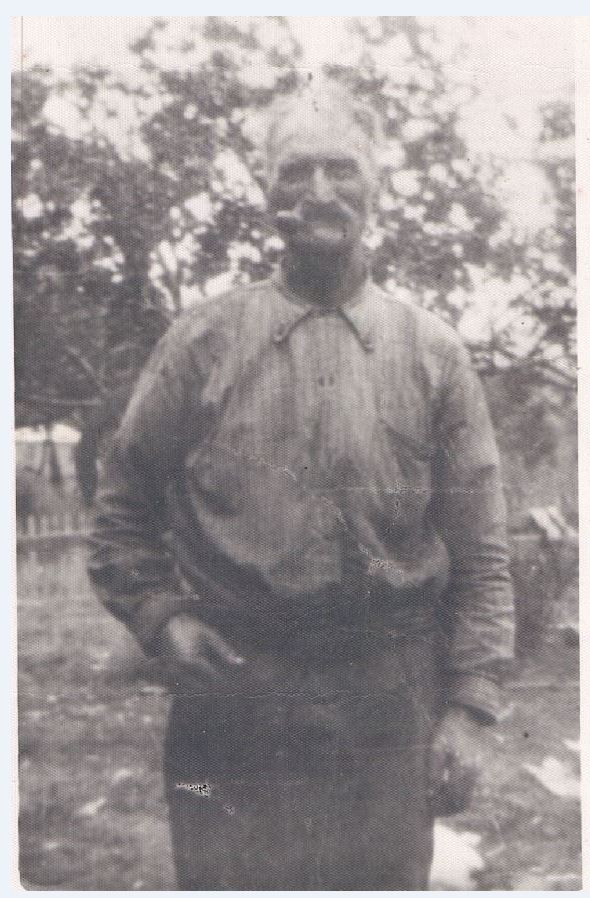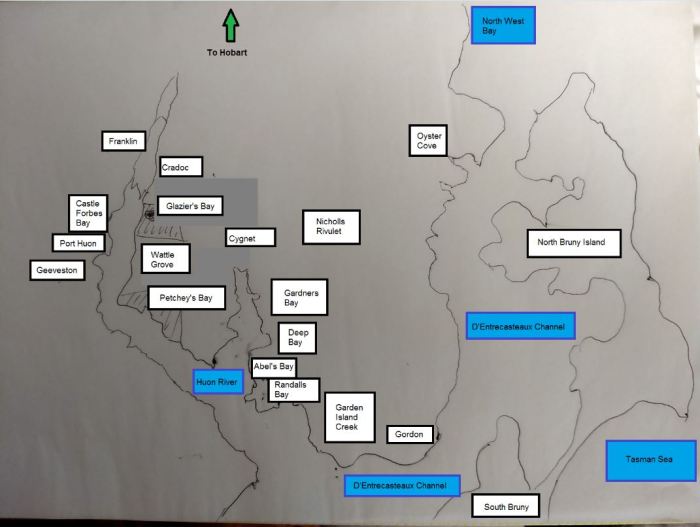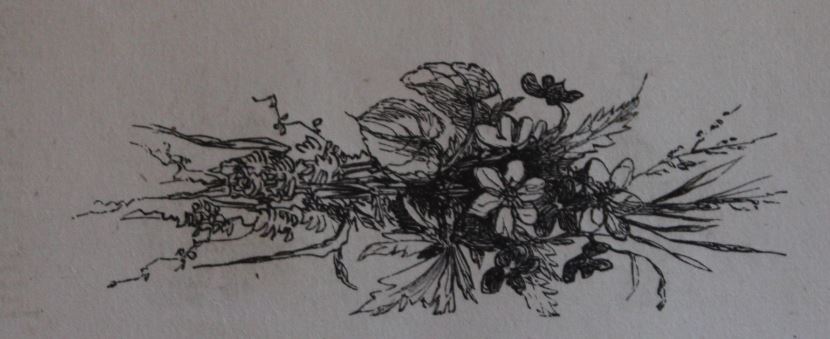In the 1850s, three convict brothers surnamed Dillane completed their term of servitude and were let loose on south-eastern Tasmania as new settlers. They settled on the eastern bank of the Huon River in a heavily wooded, very hilly area. It was almost inaccessible from Hobart Town, the colony’s main town. There was a push to open up this region but the difficulty of access was a major obstacle.
The Dillane brothers grew up along the western border of Limerick in Ireland where the war against the British invaders was still going strong. Roads, bridges and shops had never been part of their world. Nor was oversight by local authorities. Their new home suited them very well and they made a roaring success of it. They cleared some land but only what they had to. They didn’t worry too much about property boundaries. They worked hard, married second wives and raised large families.
Two of those Dillane brothers were the grandfathers of Edward (Ned) Dillon pictured here in the photograph I have chosen to feature. Ned was my great grandfather. It is the only picture I have ever seen of him. I don’t know who took this picture, but it was taken in his later years probably at Gardners Bay.

Edward (Ned) Dillon 1878-1958
Transportation had transmuted the surname Dillane to Dillon, and it never changed back. Therefore, Ned was Edward Dillon from birth.
By the time of Ned’s birth there were 44 Dillons in the Huon. This count does not include the family of Ned’s aunt Johanna Dillon who had become Mrs John Thorp. If we add the six children she had produced by the year of Ned’s birth we have a total of 50 Dillons where a mere twenty years earlier there had been 3, all still living in that one isolated corner in the Huon. It’s quite astounding. Apart from a few tragic early deaths, the family were healthy and vigorous.
Fifty individuals and only about twelve Christian names among them, but while from a distance the duplication of names is daunting, at the local level there was much less confusion. To illustrate this, here’s a map of the area they lived showing Ned’s birthplace, Gardner’s Bay.

Showing the area of settlement for the original Dillane brothers. Edmund and John remained at Gardners Bay, Timothy and his family moved to Bruny Island.
On the map the distance looks quite small, but even when I was a child it still took an hour and a half to travel that 60 kilometres. The road to Hobart was a windy, narrow hill-hugging sealed track involving much cooperation where one car met another coming the other way. Just over a century earlier when Ned was born, the way to Hobart town involved taking a boat up the Huon as far as Franklin and travelling up from there. It wasn’t travelled much. They were quite self-sufficient.
By modern standards the above map looks like a small area, but even this map encompasses a much larger world than that of Ned Dillon. He lived very much within one community. The background of the photograph shows his world.
I couldn’t find a good map of the region in the public domain so I made my own. It’s a bit messy, but it perfectly shows the world of Ned Dillon. The watercourses are labelled in blue, the land in white. The distance from Gardners Bay to Cygnet (formerly named Lovett) is just under 10km, or about 6 miles. At the time of Ned’s birth, Lovett did not exist. There was a small administrative township there named Port Cygnet.

Very basic map of the regions around the township of Cygnet.
Edward Dillon was born on 18th Nov 1878. His father John Dillon was the son of the convict Edmund Dillane to his first wife Maria Woulfe. John was still a child when his father was transported, but he, his brother Edmund and his sister Johanna joined their father a few years later.
Mary Teresa Dillon was born in Glazier’s Bay on 15th April 1860, the daughter of convict John Dillane and his second wife Bridget Behan.
Mary was aged 17 when she married her 35 year old cousin on 11th May 1877 at Port Cygnet. Their first child John was born four days later. The family then settled at Gardners Bay where the rest of their children were born.
Ned had no chance to meet his older brother. Young John died two months before Ned’s birth. A new brother John was born just after Ned’s second birthday.
The children kept coming, in the usual Dillon way. Andrew, Christopher, Bridget, Johanna and Mary had been brought into the world by Ned’s twelfth birthday. The family were orchardists and Ned worked on the property from a young age with all his cousins. Very frequently, the Dillons all worked together. There were certainly enough of them, they didn’t need to bring in outside labour.

Sandrock Bay near Randalls Bay in the region the Dillons have lived since the 1850s. This is how it looks today.
It was all shaken up when Ned’s father died on 26 October 1891 leaving a rather large young family. Ned took over as the man of the house, working full time on the family’s farm. He was sixteen when his mother, then aged 35, remarried. I’ve had a lot of trouble finding her second husband. The oral history in the family – which I’ve grown up knowing – is that Mary Dillon married Pretty-boy Cowen. The place is full of nicknames. A search in the vital records show him to be Albert Cowen aged 20 at the time of marriage, but there is no birth record for an Albert Cowen of similar age.
I suspect his birth is the one registered as Alfred Cowen in Gardners Bay 13 Aug 1874, son of Joseph Cowen and Harriet Devereaux.
Ned became an adult and met his future wife. Well, in that region it doesn’t make sense to say that. They all grew up together. He was probably around when she was born since she was nine years younger than he was. Patience Victoria Bone was born on 16 April 1888 in Garden Island Creek, but by her teen years her family had moved to Port Cygnet. At the time of their marriage Ned was 25 and Patience was 16.
Patience’s father Richard was the son of James Bones and Mary Ann Cowen. Mary Ann was the sister of Joseph Cowen, probable parent to Mary Dillon’s second husband. So Mary’s second husband was probably the cousin of her daughter in law’s father. But now I’m getting distracted. Back to Ned!

Ned and Patience were married on 11 September 1904 in Cygnet, which had finally come into existence as a proper town. They settled at Gardners Bay where Ned was an orchardist and small fruits farmer. It seems to have been a happy marriage. My grandfather remembered Patience as being an ‘unusual’ woman, one with a quirky sense of humour and a love of novelty. Eight children were born to Ned and Patience between 1905 and 1922.
Patience was tragically struck down by an inherited health condition and died at the age of 41 on 05 Feb 1930, leaving Ned with his young family. He did not remarry. He continued farming until a year or two before he died when he moved in to Cygnet. The 1954 electoral roll is the last one to show him living at Gardners Bay.
Ned passed away on 12 Apr 1958 in Cygnet and was buried in the Catholic Cemetery there. He was a quiet man who lived a very quiet life, but having a photograph keeps him with us a unique individual.